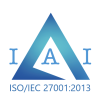Healthcare IT supports better care, reduces burnout, and enables growth. For mid‑sized to large healthcare providers, modernizing systems can feel out of reach. The good news? You don’t need a massive budget or internal IT team to make a real impact. Here’s how you’re making it happen — without the overhead.
IT budgets are finally getting the attention they deserve
75% of healthcare providers increased their digital and IT budgets, and one in five saw boosts of over 30%. This reflects a growing recognition: outdated systems pose both safety and financial risk. As providers face rising expenses and shrinking margins, investing in smart IT makes sense.
Legacy EHRs are a real burnout driver
Healthcare providers are painfully aware: physicians are burning out, often due to clunky EHR workflows and documentation burden. Meanwhile, ambient AI scribes — which have been deployed over 2.5 million times at one large provider — saved nearly 15,000 hours of physician documentation time in just a year.
Solution: Automate documentation and seamlessify EHR integration so staff spend more time with patients, not paper.
Cyber threats stay at the top of the risk list
Healthcare continues to be the most breached industry, with PHI in the crosshairs. With ransomware and phishing still rising, tightening perimeter defenses and testing staff readiness is no longer optional.
Live phishing simulations, endpoint monitoring, and HIPAA‑aligned backups can all be deployed by expert Managed Services Provider (MSP), no on‑staff security team needed.
Interoperability = Patient safety & cost‑control
A surprising one-third of medical errors are linked to poor data flow between systems and labs. More integrated platforms mean fewer misdiagnoses, fewer duplicate tests, and lower liability — crucial for today’s reimbursement landscape.
A third‑party par orchestrate integration between EHR, labs, RPM, and billing systems — freeing providers to care, not code.
AI doesn’t need heavy infrastructure — just trust
IP pilot programs and ambient AI show promise; 65% of providers believe AI can best support clinical documentation, with 1+ hours keyboard time saved per doctor per day.
But don’t get ahead of infrastructure. Without clean data, staff training, and cautious validation, AI projects falter.
Map out a pilot with EHR–AI integration, test impact, and scale safely — all possible with remote support and planning.
Put it all together — without the overhead
| Challenge | Impact | Modern Fix (No Overhead) |
| Legacy systems & clinician burnout | Poor care, low morale | AI assistants + EHR integrations via outsourced automation |
| Cyber threats & PHI risk | Breach fallout, downtime, fines | Virtual SOC, phishing drills, endpoint defense from specialists |
| Interoperability issues | Errors, cost, delayed care | API integrations and middleware without hiring coders internally |
Why does this work?
You’re growing fast. Staff strain is visible. And you don’t need a big IT department just to keep up. By partnering with a specialist like RTCS, you can:
- Scale on-demand: Gain 24/7 monitoring and modernization without headcount
- Lock down your systems: Stay secure with professional-grade cybersecurity
- Enable frontline innovation: Bring in AI and workflow automation quickly and safely
Next steps
Start with a Free Tech Stress Test — a quick diagnostic session (15‑30 minutes) where we identify your biggest pain points and outline priority fixes. No obligation, just clarity.
Compliance may be mandatory, but in 2025, the true goal is resilient, clinician-friendly, future-ready IT. Mid‑sized to large providers don’t need overhead to lead the digital transformation — they need thoughtful partnerships, not staffing increases.
Let RTCS help you modernize — without adding internal weights.
 We're Hiring
We're Hiring


